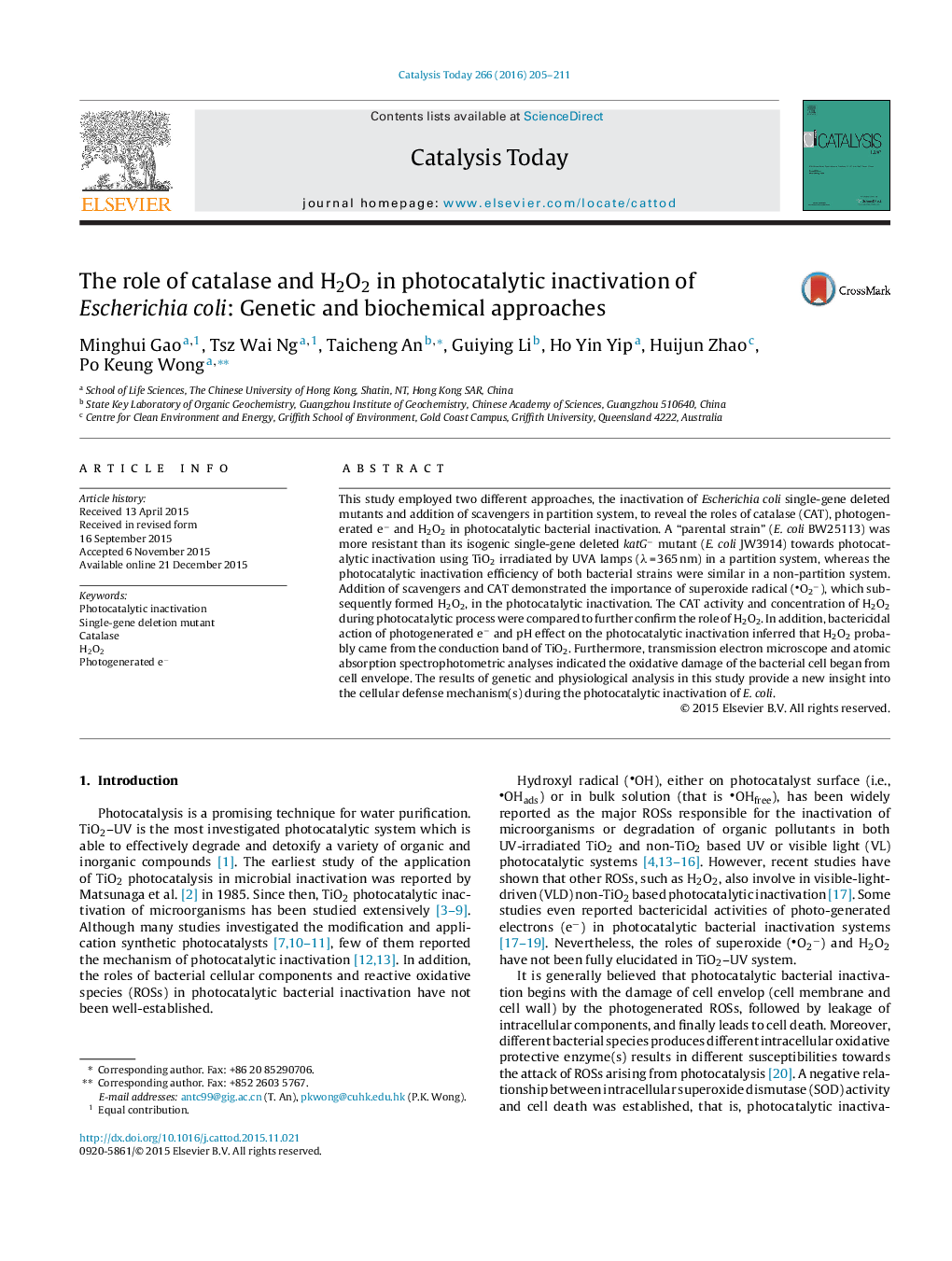| Article ID | Journal | Published Year | Pages | File Type |
|---|---|---|---|---|
| 53696 | Catalysis Today | 2016 | 7 Pages |
•The isogenic KatG− mutant is more susceptible to photocatalytic inactivation.•It is not OH but H2O2 plays a major role in photocatalytic inactivation of E. coli.•Photogenerated e− also contribute to inactivate E. coli.•The inducible catalase is detected in parental strain but not in katG− mutant.•TEM illustrated the damage was from out into interior components.
This study employed two different approaches, the inactivation of Escherichia coli single-gene deleted mutants and addition of scavengers in partition system, to reveal the roles of catalase (CAT), photogenerated e− and H2O2 in photocatalytic bacterial inactivation. A “parental strain” (E. coli BW25113) was more resistant than its isogenic single-gene deleted katG− mutant (E. coli JW3914) towards photocatalytic inactivation using TiO2 irradiated by UVA lamps (λ = 365 nm) in a partition system, whereas the photocatalytic inactivation efficiency of both bacterial strains were similar in a non-partition system. Addition of scavengers and CAT demonstrated the importance of superoxide radical (O2−), which subsequently formed H2O2, in the photocatalytic inactivation. The CAT activity and concentration of H2O2 during photocatalytic process were compared to further confirm the role of H2O2. In addition, bactericidal action of photogenerated e− and pH effect on the photocatalytic inactivation inferred that H2O2 probably came from the conduction band of TiO2. Furthermore, transmission electron microscope and atomic absorption spectrophotometric analyses indicated the oxidative damage of the bacterial cell began from cell envelope. The results of genetic and physiological analysis in this study provide a new insight into the cellular defense mechanism(s) during the photocatalytic inactivation of E. coli.
Graphical abstractFigure optionsDownload full-size imageDownload high-quality image (118 K)Download as PowerPoint slide
